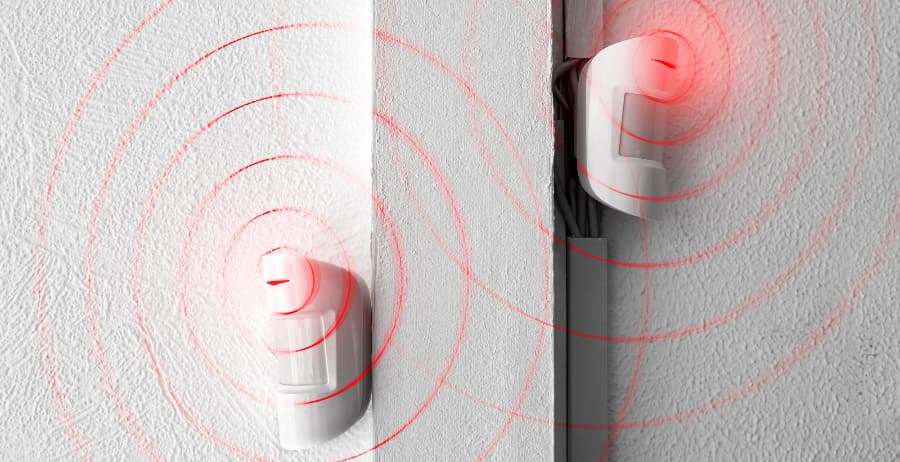How to cut down on motion sensor false alarms in your Fort Smith home

Motion sensors are essential aspects in a multi-layered home security plan, as they’ll let you know if an unwanted guest is sneaking around your house. Sadly, they’re also vulnerable to false alarms, causing Fort Smith homeowners to lose sleep. If you’re looking for solutions, review our recommendations for minimizing motion sensor false alarms.
What causes motion detector false alarms?
The bulk of home motion detectors utilize passive infrared (PIR) technology to detect activity. They sense changes in infrared radiation inside their coverage zone and can tell when someone is in motion by their heat signature. False alarms are frequently initiated by:
- Pets leaping on sofas or countertops
- Bursts of direct light through a window
- A variety of heat sources, such as fireplaces and ducts
- Sudden humidity or temperature fluctuations, which cause equipment to be too sensitive or unresponsive
Microwave motion sensors are an additional frequently used option that discovers activity by continually sending out and assessing electromagnetic waves. Called active motion detectors, they spot movement via modifications in the reflected signal. Any unanticipated movement, like curtains moving when the HVAC fan turns on, can set off an alarm.
Ideas for decreasing motion sensor false alarms at your Fort Smith home
Aside from a lack of sleep, motion sensor false alarms are even more troublesome as they might lower your sensitivity to genuine threats. Furthermore, recurring false alarms might become an annoyance for emergency providers and may impact future response times. Thankfully, you can help circumvent them by adhering to these recommendations:
- Inspect the sensitivity settings of your equipment and modify to your furry friend’s behavior and size.
- Avoid pointing them at high-activity places like feeding stations, even when using animal-friendly sensors.
- Avoid pointing motion sensors at windows exposed to intense sunlight.
- Make certain spaces are properly insulated to help prevent temperature changes.
- Regularly dust and clean equipment to keep sensors clear.
- Monitor batteries and replace as needed. Some motion detectors will even tell you when batteries are low.
- Let a pro do the installation to ensure correct placement.
You could also invest in dual-technology devices that use both active and passive sensors to identify activity, providing a higher degree of accuracy.
How to incorporate motion sensors into your Fort Smith smart home?
Integrating motion sensors into a modern smart home is a excellent way to enhance your security and convenience. You’ll have the opportunity to do the following:
- Obtain immediate alerts on your mobile device when movement is spotted. You might program them to alert you when your children get home from school.
- Program indoor cameras to record any time a motion sensor is tripped.
- Change thermostat settings or lighting according to whether people are home. This feature can help lower utility expenses.
Leading smart home devices, like those installed by Vivint, continue to harness artificial intelligence (AI) to more accurately recognize threats and reduce false alarms.
Create your Vivint smart home with advanced motion sensors
Get the top motion sensors in Fort Smith from Vivint when you customize your fully functional smart home. Our sensors are pet-friendly and let you program a variety of automation actions. You’ll also appreciate the five-year battery and immediate mobile notifications. Call (479) 370-4503 today to learn more.